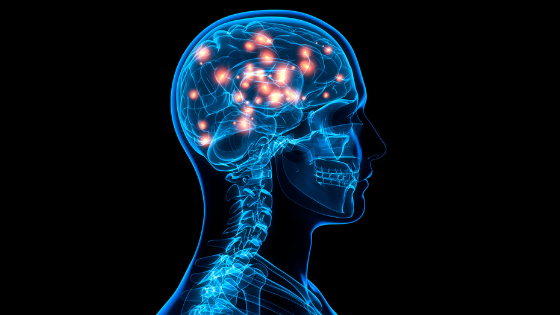
For years I’ve struggled with migraines. Diagnosed at 4-years old, I can’t really remember ever being completely headache-free. You might be thinking, “Of course you feel fatigued. Who wouldn’t?”
But, it’s a little more complicated than that. I also had a few concussions as a martial artist, and in sports, like flag football. Perhaps most notably, I had a traumatic brain injury in my 20s when I was hit by a car on my bicycle — yes, a life-changing event. I’ve also had viral meningitis and Lyme disease twice — two more migraine triggers.
In the last year, I started wondering, “Is all of this affecting the way my brain works? Is it just one thing, or is it some combination of these potential brain-affecting ailments? How can I tease all of this apart?”
In comes Field, a wellness team currently located at Blum Center for Health in Rye Brook, NY, that offers brain optimization, or in their own words, “Much like computer software, you can think of brainwaves as code that we can train, tweak and reprogram.”
They claim that by mapping the brain, actually seeing how the brain responds to stimuli (or lack of stimuli), they can help people rewire the brain to respond or fire differently. The treatment particularly helps people with ADD/ADHD, depression, concussions, stress/anxiety, PTSD/trauma, even insomnia.
Could this be the answer to my headaches? It certainly peaked my interest.
I decided to give it a try.
Prior to my initial assessment appointment I filled out a questionnaire — basically, a brain health history. I elaborated on my reasons for the appointment, and although I was a bit nervous to have electrodes — electrocephalography (EEG) — attached to my head (this is my brain after all!), I felt reassured that they knew what they were doing.
On the day of my appointment I sat in a beautiful slightly reclined chair — I figured it was a way to get me to relax a bit. Co-founder Devon White sat behind a bank of computer screens, and Kitty Boyle, the technician, placed a space-age cap on my head and attached the electrodes to capture my brain’s activity. They explained everything that would happen. So far, so good.
Kitty instructed me to close my eyes and relax. I could hear the white noise of the computer working, a few whispers between Devon and Kitty and then, “Melissa, try not to blink.” Did you know that you can blink with your eyes closed? Evidently I blink a lot!
This first assessment probably only lasted a couple of minutes, but it seemed longer. Trying not to blink took a lot of concentration.
The second assessment was the same as the first — only this time, eyes open. And again, no blinking.
The third assessment was math-related — counting down from 1,000 by 7s to see how my brain was firing when given a task.
And lastly, Devon and Kitty did a Traumatic Brain Injury Assessment to determine the impact of the injury.
Once all the data was in, all my brain images flashed up on the wall in front of me. Sitting in the comfy chair, it kind of felt like a movie screening — only it was all about me. I was so eager, and even though the assessment was in real time, the anticipation was palpable. What’s going on in there?
Devon and Kitty walked me through all the data. We looked at all the brain waves — gamma, delta, theta, alpha and beta. They took the time to explain what these meant in relation to my assessment. We looked at the Mental Math EEG and the Traumatic Brain Injury Discriminant Analysis.
Here’s what I learned:
- I have a beautiful, fast-firing, high functioning brain. Phew!
- One thing that popped out is that I have lots of activity at F7 — the front left of my brain — in fact, it never seems to turn off unless I’m keeping it busy with an activity. It makes me hyper alert — and it can make me exhausted if I can’t turn it off. This is so true! Now that it has been brought into my awareness, I’m noticing it all the time. During meditation, when I’m trying to fall asleep, when I just rest with my eyes closed. My brain NEVER gets quiet!
- There is a pronounced lack of activity in the T4 region — the right temple. This could be the area of my Traumatic Brain Injury.
- Lastly, there was a TBI, but the great news is: it’s effect is minimal. Hooray!
Devon and Kitty recommended neurofeedback, a type of biofeedback that focuses on the brain and its firing patterns. It utilizes real-time displays (EEG) of brain activity — in order to teach self-regulation of brain function.
Here is what they recommended:
- We would increase alpha waves while my eyes are closed in order to help facilitate daydreaming and quiet down my brain that never stops firing.
- Give theta to T4 in order to take down headaches.
- Use neurofeedback to find plasticity in the part of my brain that isn’t firing and discover if this is indeed residue from my TBI.
So, I’m going to give it a try! I’m hopeful and optimistic. And, I’ll keep you posted on my progress.
Interested in learning more about brain-mapping? Contact my friend Devon, at Field.
Meet Melissa: Melissa Rapoport is the Manager of Health Coaching and Lifestyle Programming at Blum Center for Health in Rye Brook, NY. She combines her graduate work in Developmental Psychology with her education in nutrition, health and coaching to create highly individualized programs that result in lifetime change. A contributing author to three international bestselling books, Melissa’s greatest joy is her relationship with her two daughters. To learn more about Melissa’s coaching practice at Blum Center for Health, click here.